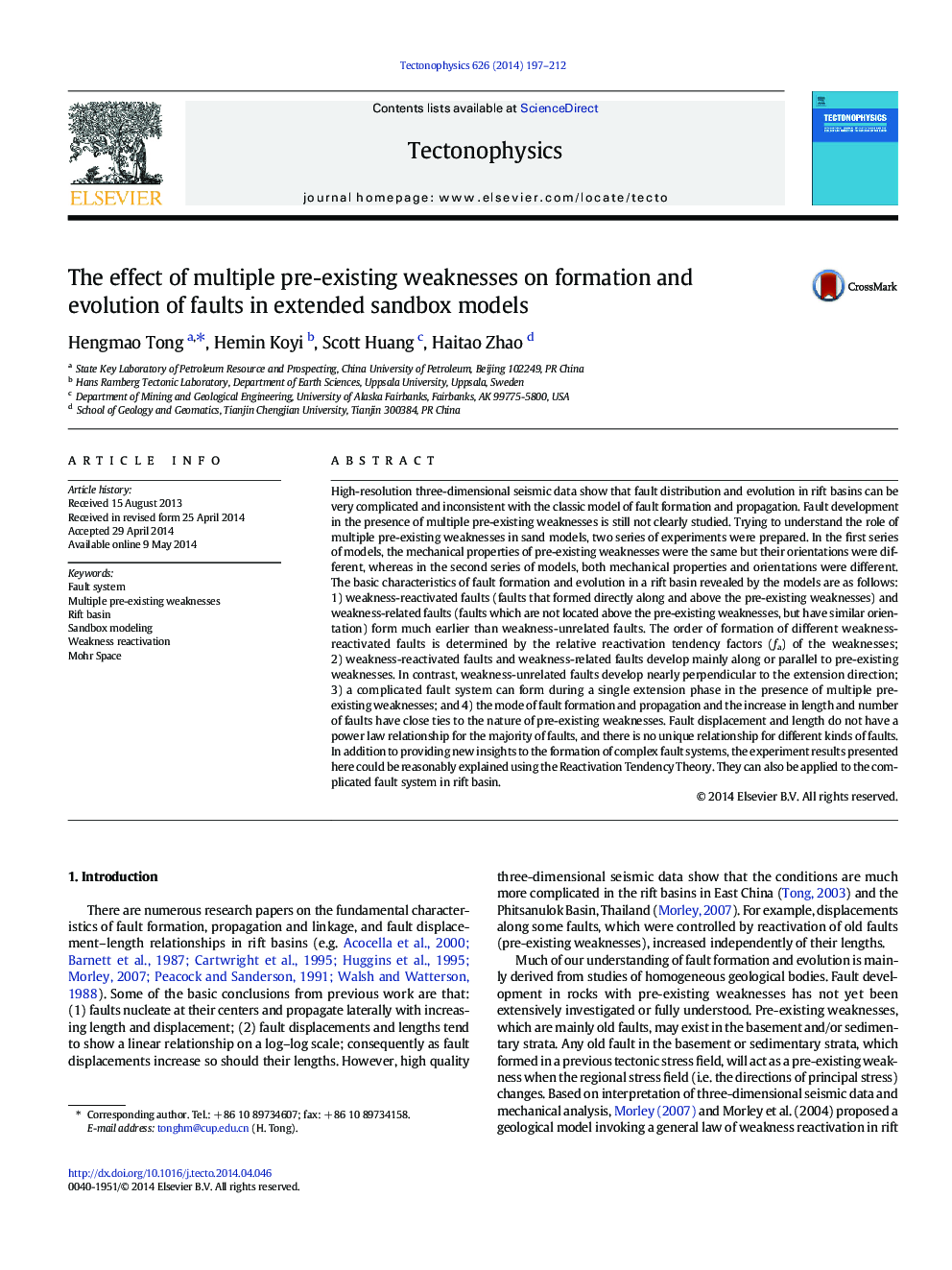| Article ID | Journal | Published Year | Pages | File Type |
|---|---|---|---|---|
| 6433854 | Tectonophysics | 2014 | 16 Pages |
â¢A model of fault formation with multiple pre-existing weaknesses in rift basinsâ¢The results can be reasonably explained with Reactivation Tendency Analysis Theory.â¢The model accounts well a natural complicated fault system.
High-resolution three-dimensional seismic data show that fault distribution and evolution in rift basins can be very complicated and inconsistent with the classic model of fault formation and propagation. Fault development in the presence of multiple pre-existing weaknesses is still not clearly studied. Trying to understand the role of multiple pre-existing weaknesses in sand models, two series of experiments were prepared. In the first series of models, the mechanical properties of pre-existing weaknesses were the same but their orientations were different, whereas in the second series of models, both mechanical properties and orientations were different. The basic characteristics of fault formation and evolution in a rift basin revealed by the models are as follows: 1) weakness-reactivated faults (faults that formed directly along and above the pre-existing weaknesses) and weakness-related faults (faults which are not located above the pre-existing weaknesses, but have similar orientation) form much earlier than weakness-unrelated faults. The order of formation of different weakness-reactivated faults is determined by the relative reactivation tendency factors (fa) of the weaknesses; 2) weakness-reactivated faults and weakness-related faults develop mainly along or parallel to pre-existing weaknesses. In contrast, weakness-unrelated faults develop nearly perpendicular to the extension direction; 3) a complicated fault system can form during a single extension phase in the presence of multiple pre-existing weaknesses; and 4) the mode of fault formation and propagation and the increase in length and number of faults have close ties to the nature of pre-existing weaknesses. Fault displacement and length do not have a power law relationship for the majority of faults, and there is no unique relationship for different kinds of faults. In addition to providing new insights to the formation of complex fault systems, the experiment results presented here could be reasonably explained using the Reactivation Tendency Theory. They can also be applied to the complicated fault system in rift basin.
